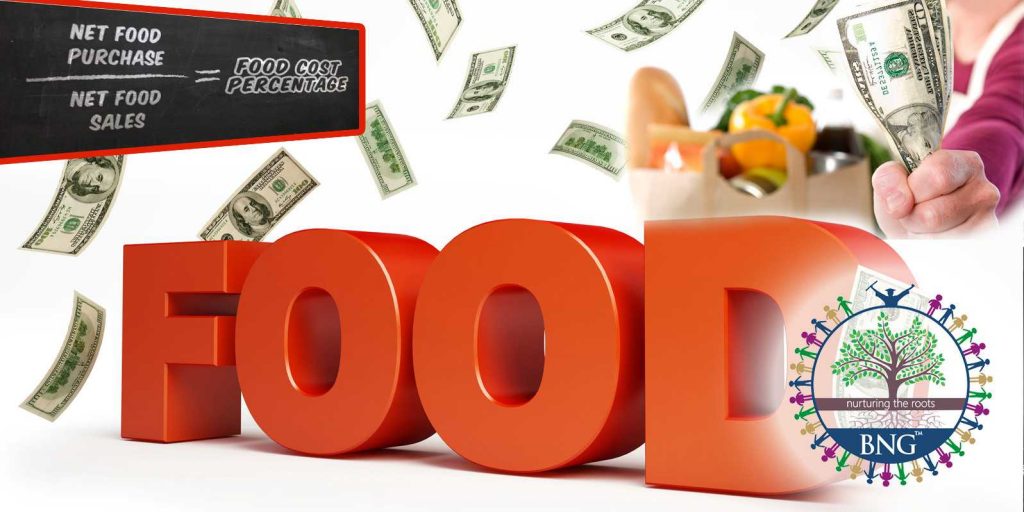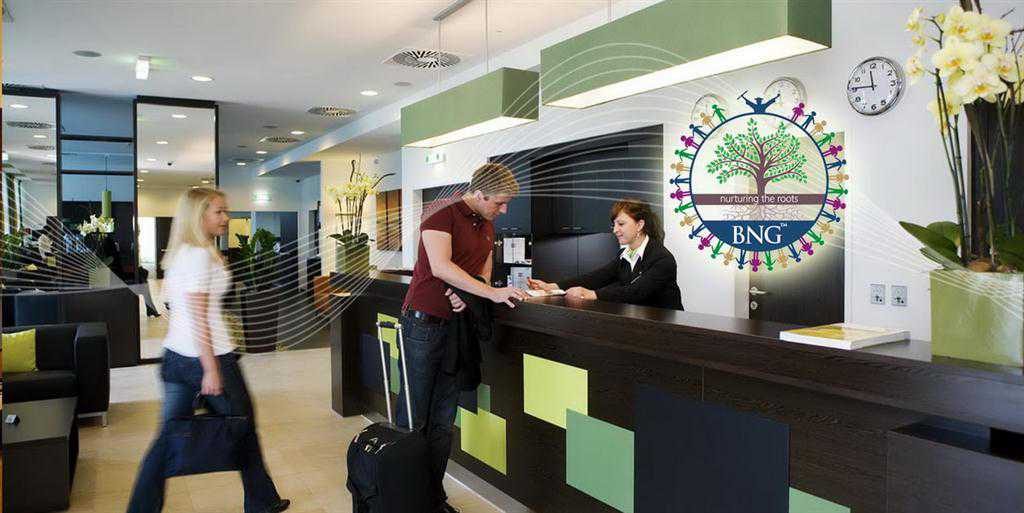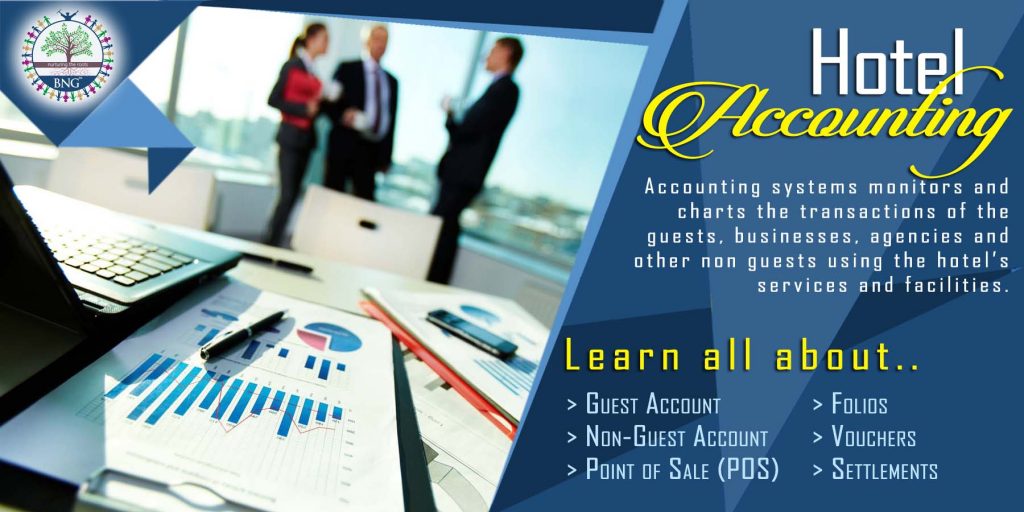Food Cost and Food Cost Control
Food cost may be defined as the cost of material used in producing the food sold. In other words, it is the cost of food consumed less the cost of staff meals. The main objects of food cost or material costing are:
- To ascertain the food cost of particular item on the menu
- To ascertain the total expenditure on food over a period of time.
- To control cost, price, profit margins and provide information for formulating an effective pricing policy.
- To disclose faulty purchasing and inefficient storing.
- To prevent pilferage and wastage.
- To ensure customer satisfactions.
- To bring cost- consciousness among the employees.
- To reduce cost and improve quality.
- To provide cost estimates to manager for developing budgets.
- To assist manager in making control decision.
- To evaluate pricing and establish future pricing.
The usual method of food costing is summarized as follows:
- Calculate the food cost of each item on the menu
- Control labour and overhead without attempting to apportion them to various item produced.
- The selling price of each dish is usually fixed by adding to its prime cost (food cost) a certain percentage to cover wages, overheads and net profit.
Labour cost and overheads are not usually apportioned to the individual cost of dish produced. It should be ensured that individual selling price of the dish will produce sufficient income to cover the labour and overhead costs and achieve the required net profit.
Formula of food cost:
FC= COST OF FOOD CONSUMED – STAFF MEALS
OR,
FC= OS + (P – PR) – CS
FC= FOOD COST;
OS = OPENING STOCK;
P= PURCHASE;
PR= PURCHASE RETURN;
CS= COST OF STAFF MEAL
Total Cost: the total cost of food items is composed of three basic elements known as element of cost. The difference of sales price and total cost of a product is known as net profit. The opening cost may be classified as:
- Food Cost or Material Cost (MC)
- Labour cost (LC)
- Overhead Cost (OH)
TOTAL COST= MC +LC+OH
Material Cost: material cost refers to the basic cost in food and beverage business. The cost of material which enters into and

become a part of product is known as direct material. For example, use of ingredients in catering and flour in bread making each of these materials, are classified as direct if the costs can be identified with the product. In the food and beverage business material refers to four basic costs:
- Food Costs
- Beverage Costs
- Cost of Tobacco and Cigarettes
- Cost of Sunday sales.
Cost Sheet or Statement of Food Cost:
Cost sheet is a statement which provides for the assembly of detailed cost in respect of a cost of unit. It is prepared to indicate detail cost of the total output or products. It gives the cost per unit. The main advantages of cost sheet are:
- It discloses the food cost of a dish and cost per unit.
- It enable the management to keep a close watch and control over the production
- It provides a comparative study of the various ingredients.
- It helps in formulating a usual production policy.
- It helps in fixing up the selling price of the items produced.
Each establishment requires the calculation of food cost of dishes produced. A list of prepared of all ingredients along with the quality of each ingredient required for preparation of a dish for four covers. It is prepared in food cost sheet. The value of each ingredient is calculated by checking the price from invoice or price list. There may be two types of ingredients used. Firstly, those item purchased, the price of which is obtained from supplier’ invoice or price list. Secondly, items which are made up in kitchen such as stock, sauces, pastry etc. It is necessary to prepare a costing of all the particular ingredients for dish costing purpose.
Once the cost of all the ingredients is calculated, the total will be the food cost for say four covers. Dividing the total food cost by four, we ascertain the cost per cover. These costing sheets are prepared in advance and afterward filed for reference purpose in future. Costing may be done for the particular dish which indicates the quality as so many portions or it may be done for a particular item such as potato chips, which may be expressed in term of its weight. In the later case, if you want to calculate cost per portion, it will be necessary to specify the size of the portions to be costed.
There are some items in the costing sheet which are too small in quantity and cost to value individually. These items are costed at estimation for the whole; such items include parsley, bay leaves etc.
On bottom portion of the cost sheet following information is included:
- Total food cost.
- Cost per portion.
- Gross profit percentage.
- Selling price or charge per portion.
Cost of Food & Beverage and Cost of Sales:
The total cost of food and beverage in a restaurant is calculated by using the stock take and purchase received. Purchases refer to all credit and cash purchases purchase returns/return outwards refer to any returns that have already been included under the heading of purchases.
When calculating the value of stock the normal practice followed in any establishment is to take the cost or market price whichever is less.
Costing sheet is a very useful record of food cost covering the entire range of dishes. These could be referred to for rechecking where there is any material change in the price of the ingredients. Let us assume that the price of an ingredient has increased, the cost of other ingredients being the same. In such situation both the total cost per portion and the food per portion will increase and gross profit percentage will decrease. To obtain the same amount of gross profit percentage it will be necessary to review the cost sheet and revise the selling price. Once again the food cost will be 40% of the selling price.
Thus, a cost sheet is a statement including the following:
- Date
- Name of the dishes
- Number of portions
- Quantity of each ingredient
- Name of each ingredient
- Cost of each unit
- Total food cost
- Cost per portion
The method of preparation of food cost sheet given below:
- Calculate the cost of each menu. A list of all ingredients required to prepare each dish mist be drawn up.
- Obtain the prices of all ingredients from invoice.
- Prepare the cost sheet.
- To determine the overall gross profit required, the individual selling price of all dishes be calculated.
- A certain percentage of gross profit / kitchen profit is added to the food cost of each dish in order determine the selling price. Overall percentage that is the lower kitchen percentage; while sweet, soup, teas, may have lower food cost percentage Constant surveillance must be kept on the food cost. If the food cost percentage shows unusual variance, this could be investigated and immediate corrective action should be taken.
Factor responsible for unusual variance are:
- External Factors:
- a) Increase the purchase price of the commodities.
- b) Charges in sales-mix, Example- increase in salad, fall in sale of hot meals due to changing seasons.
- Internal Factors:
- a) Excessive wastage in the kitchen.
- b) Pilferage
- c) Carelessness in portion
- d) Bad purchasing
- e) Suppliers not keeping to specifications.
- f) Overheating of invoice books
- g) Clerical errors invoices
Food Cost Control
Whatever the size of the establishment that is opened, the basic management essential from the view point of cost control first, how much money has been received and second, how much it has take that money. The management must learn how to understand this and be able to interpret the results so that adjustments can be made where and when necessary.
The cost of meals fall naturally into three distinct section, the first being the cost of the food, second cost of the overheads which include fuel, light, heat, water, staff uniforms, laundry, social security payments, printing and stationery, cleaning material, advertising, telephone and postage, decorations, license, maintenance, linen, cutlery and crockery, replacement cost, insurance and finally rent, rates and interests on capital outlay. Third section is the salaries and wages. The relation between these classes of costs which are always a matter of interest and vary considerably from one type of catering establishment to another, the overheads, usually being greater then the bare cost of food.
The problem of any management-control system is to make sure that a pre-determined food and wage –cost percentage has been decided. The figure will take in all aspects of expenses. The final trading results will show that a correct return has been made. To obtain this the following information should be studied:
- All purchase must be controlled.
- Details of all merchandise received must be reordered, as and when issued.
- Any overproduction of food must be checked and of course reused in the best and most economical way
- Production-ingredient amount must be checked before preparation.
- Check the sales with direct number catered for.
- An efficient system of cash control must maintain.
- Sales of any kind checked with cash receipts.
- A record of costs for each section (wine, cigars, flowers, meals, rooms) must be made and recorded.
- Total daily wage cost must be recorded.
- A weekly summary of all the relevant details must be prepared.
- The trading profit and loss account should be prepared.
Cost Price:
This system is the most practical and best to understand. It allows for certain elasticity and provides the chief with a margin for artistic development. The kitchen percentage entails the application of the following formula:
GROSS PROFIT*100/TAKINGS= RATE PER CENT OF GROSS PROFIT OR KITCHEN PERCENTAGE
For example: Taking-167.75/-, Purchase-78.60/-, then Gross profit (167.75-78.60) = 89.15/-.
Therefore, Kitchen percentage is 89.15*100/167.75 = 53.15%.
When stock taking is done, there may be minor discrepancies in the percentage, but this has to be taken into account. Sometimes there are variations in percentage of profit over a short period. Such variations could be due to seasonal influences on price. The menu price is not normally altered for each variation in cost; because some items are more profitable then others and the sales may vary.
When kitchen percentage drops below the normal figure, it should be presumed that something is wrong. The decline could have been caused by different factors:
- Incorrect billing( that is customers not paying correct price)
- Portion too large.
- Inefficiency and waste in the kitchen.
- Faulty purchasing
- Dishonest practice.
Each dish is coasted and priced to show the desired percentage. At the close of the day’s business, the overall percentage is worked out and it should be tally with the figures budgeted for pricing. Some fixed priced menus (Table d’hote) may more profitable then others.
Net Profit:
All expenditure can be classified as material costs, labour cost and overheads. It follows that the difference between total revenue and the total of these costs in the net profit before tax.




